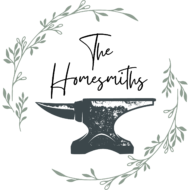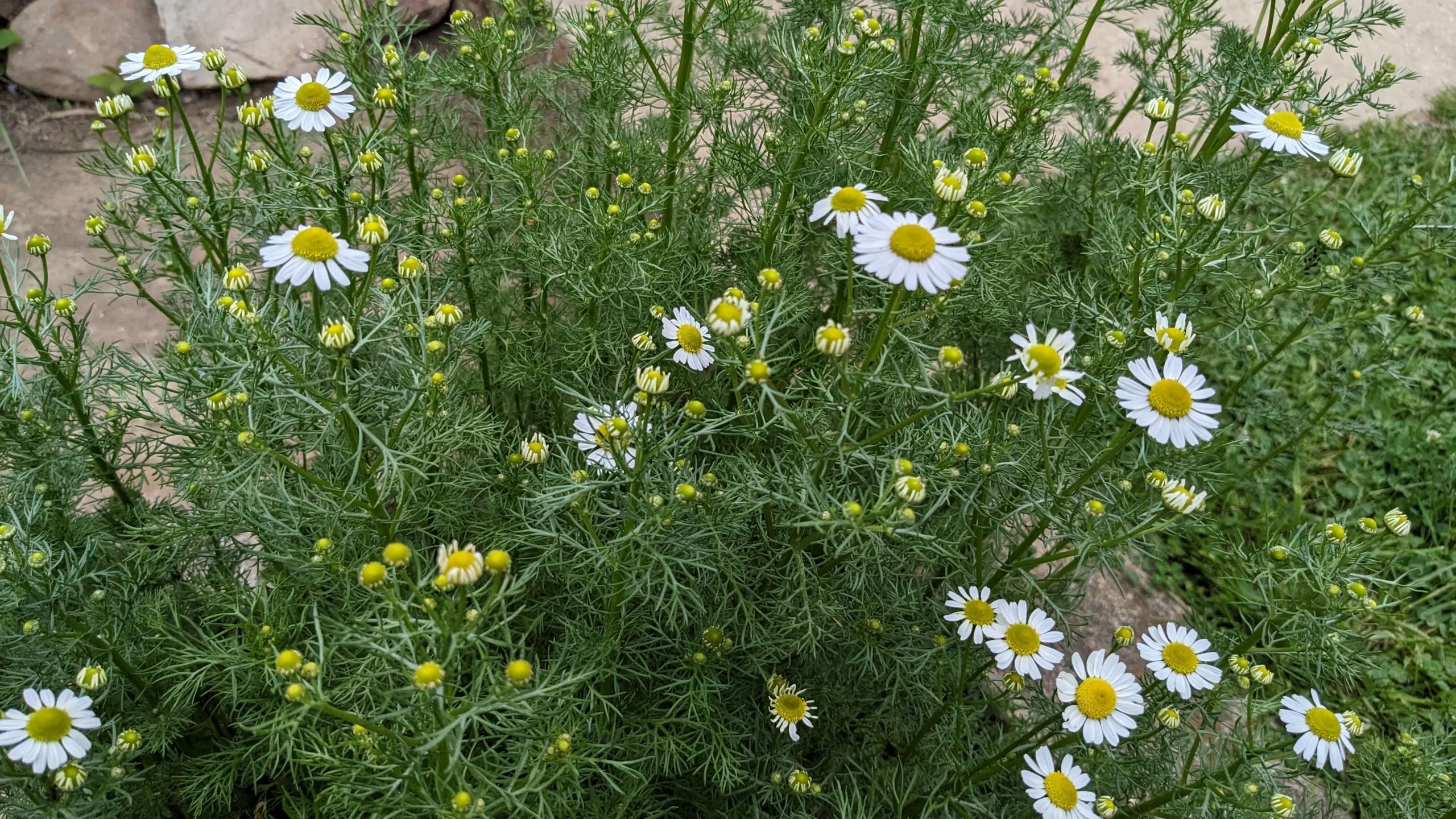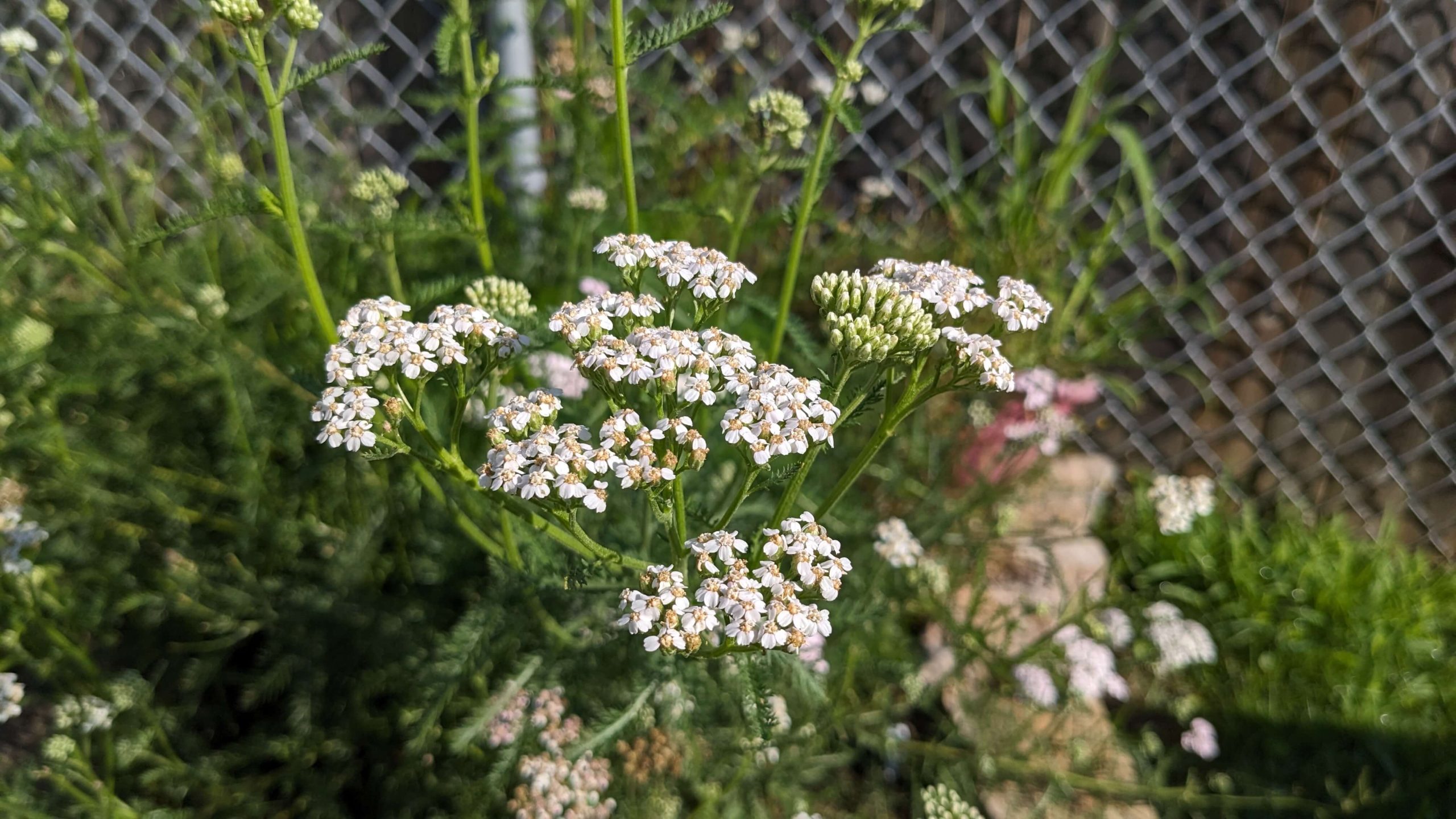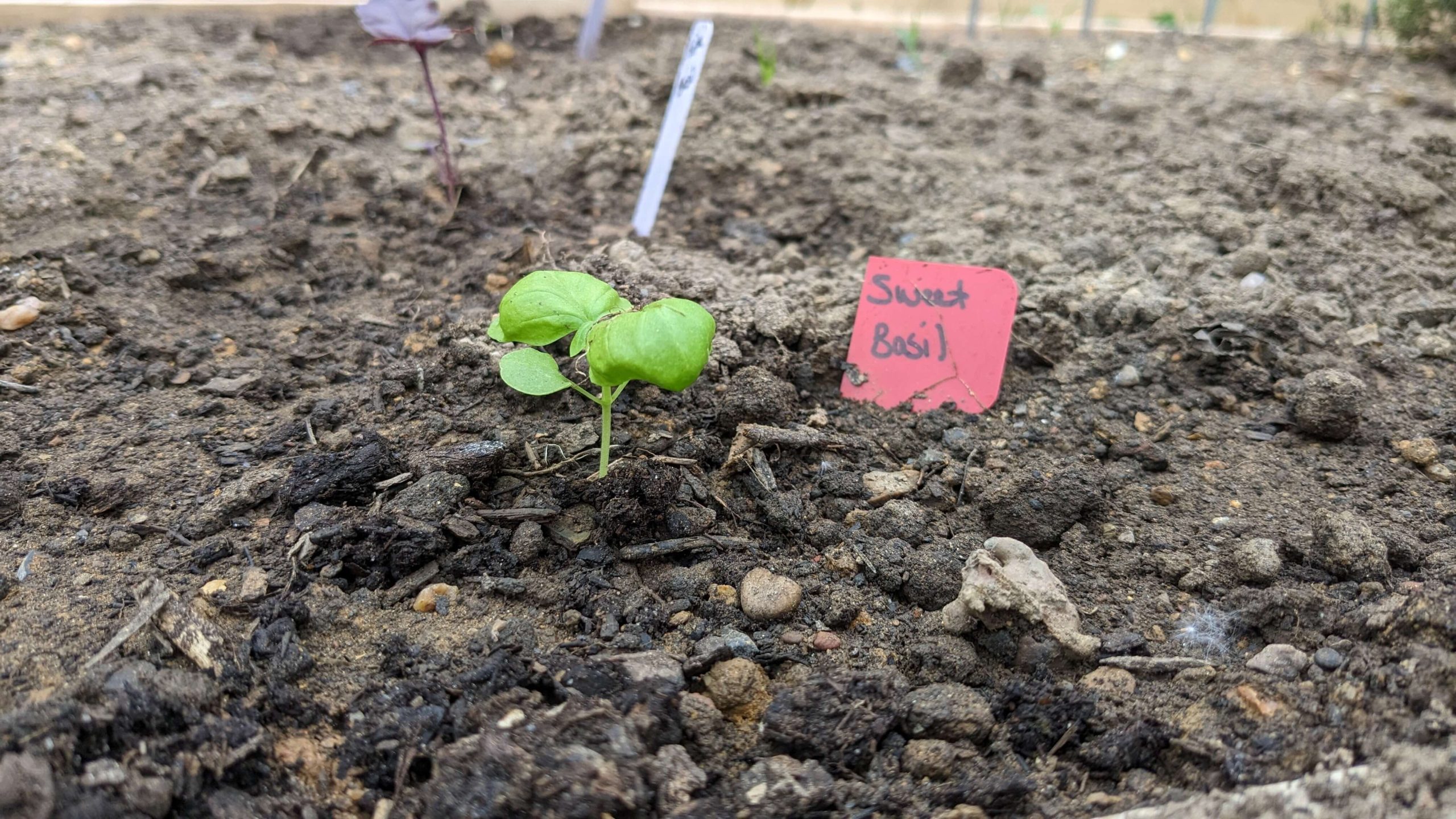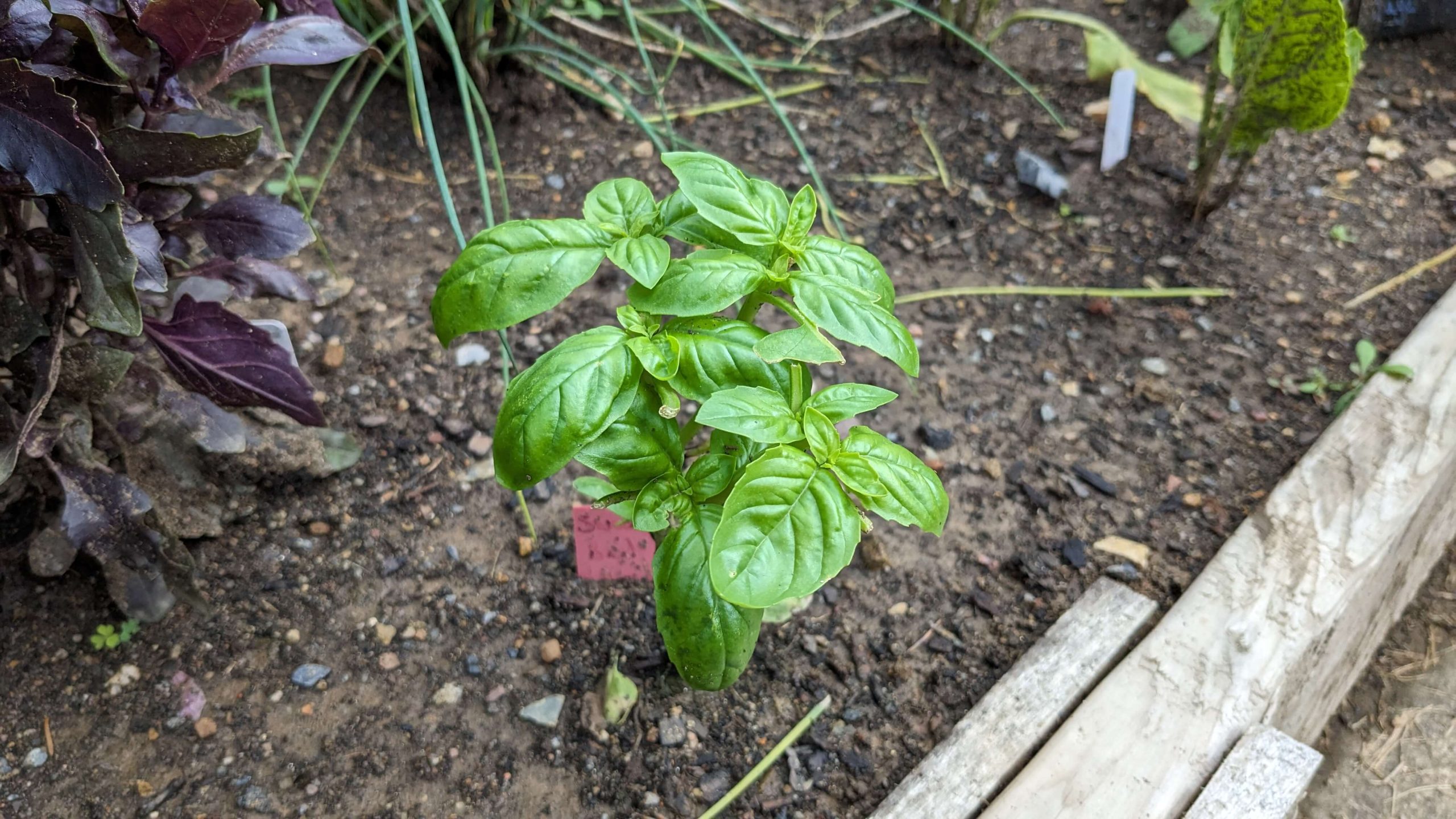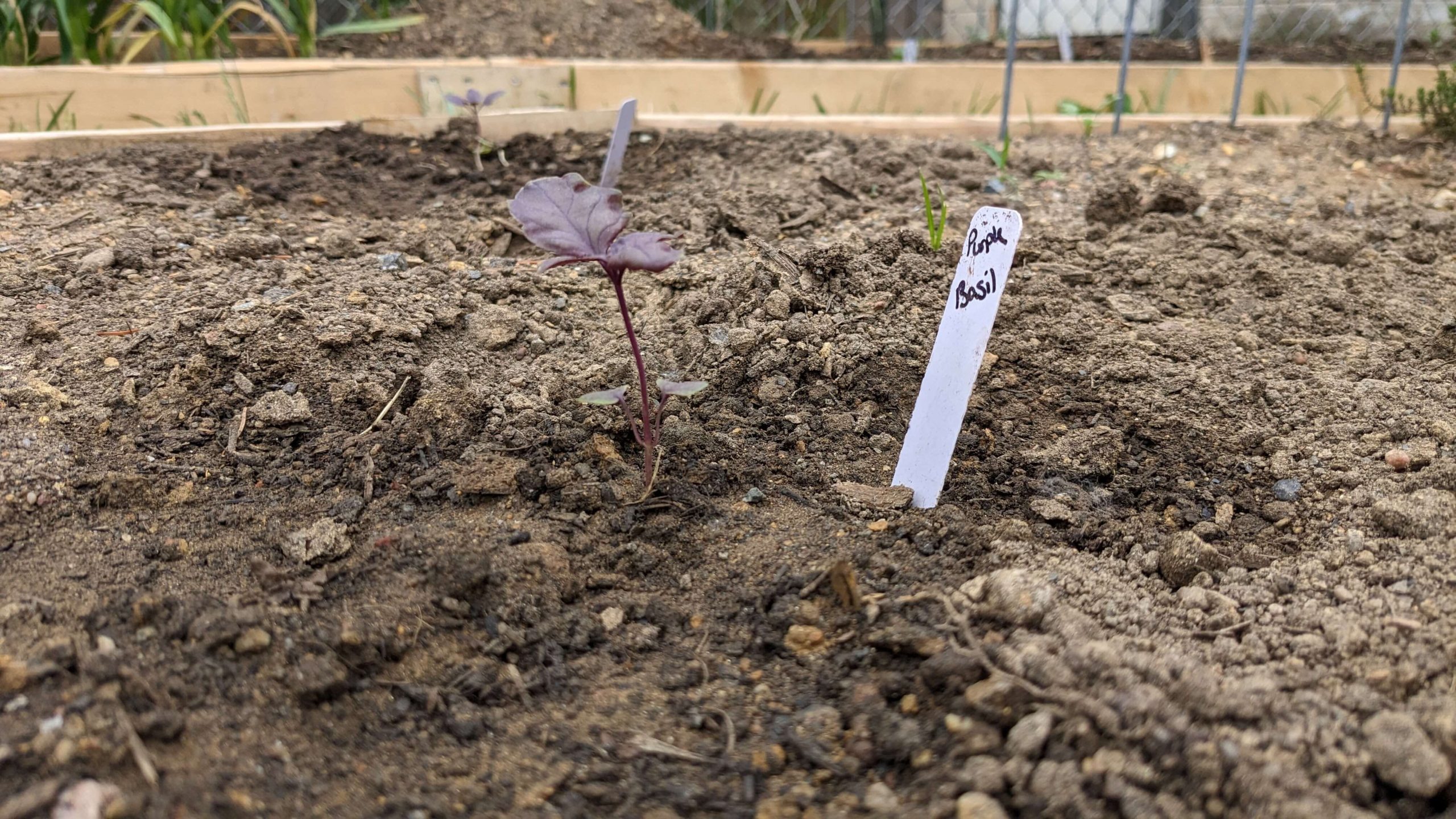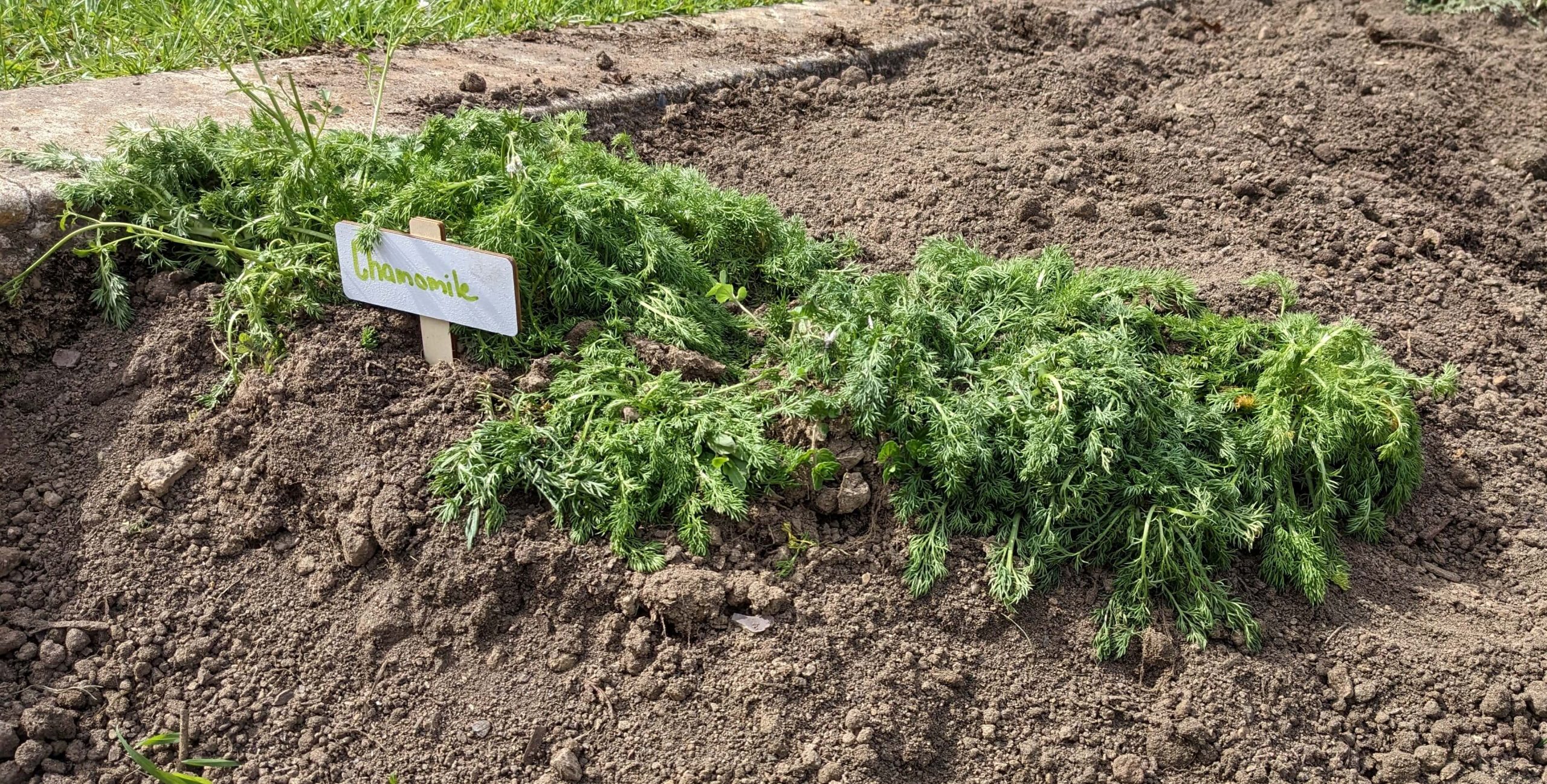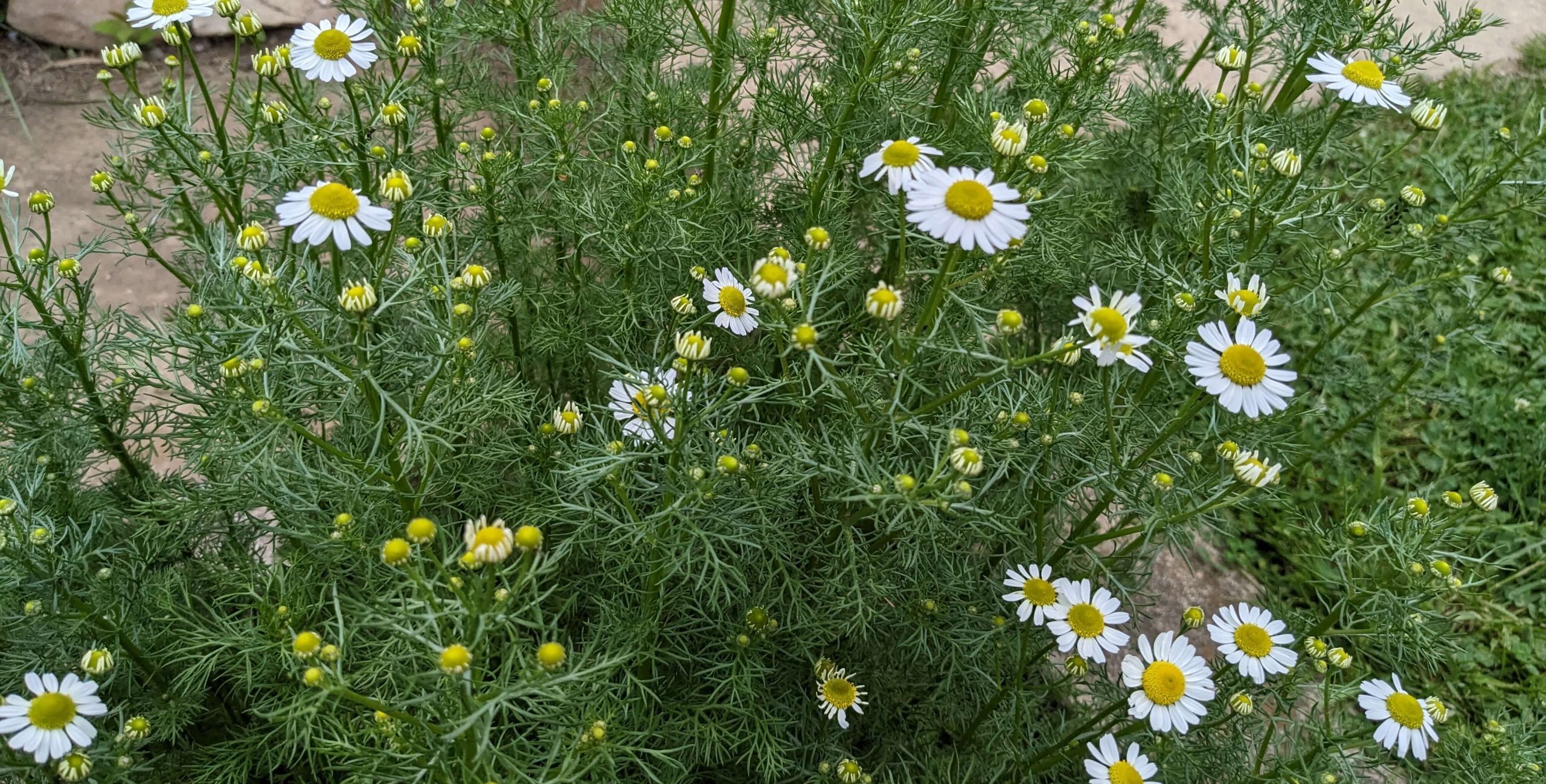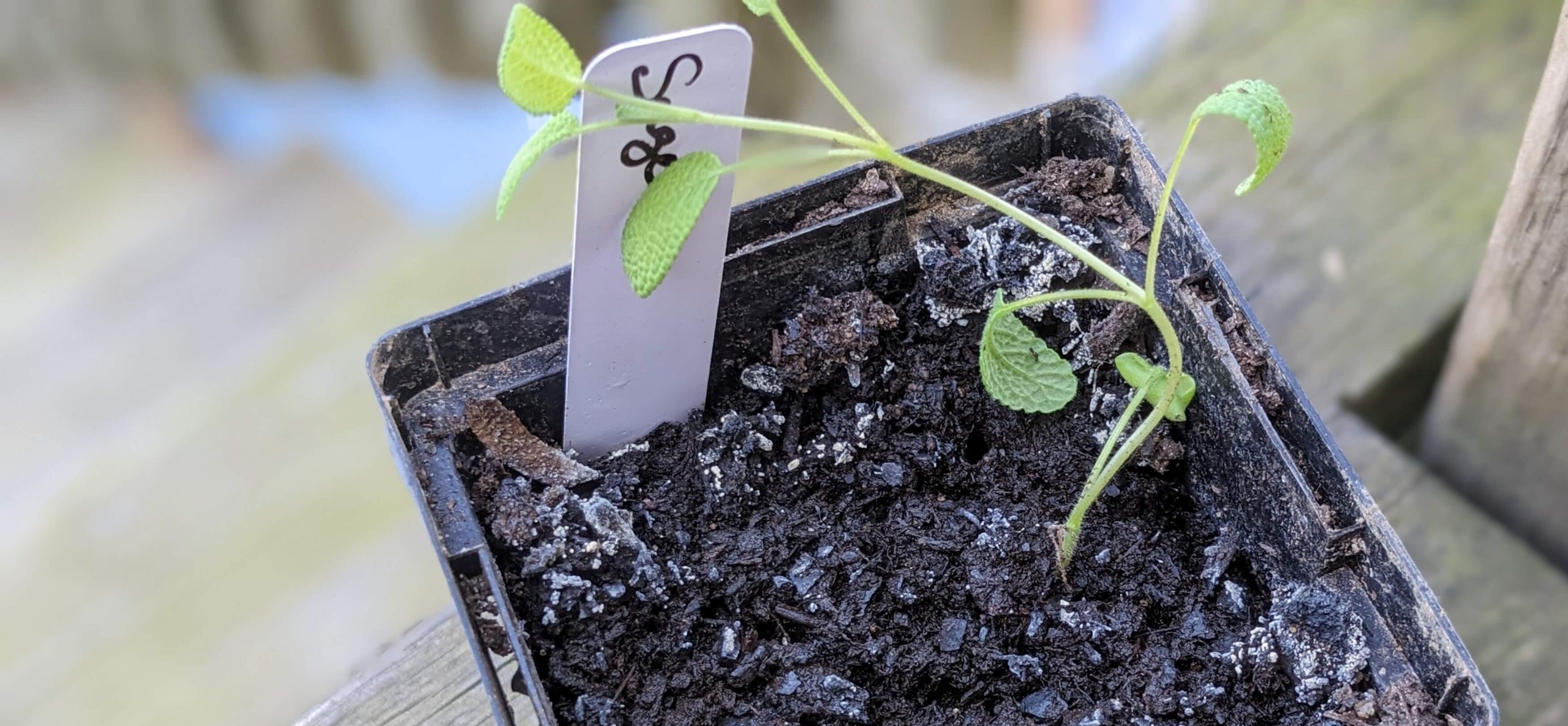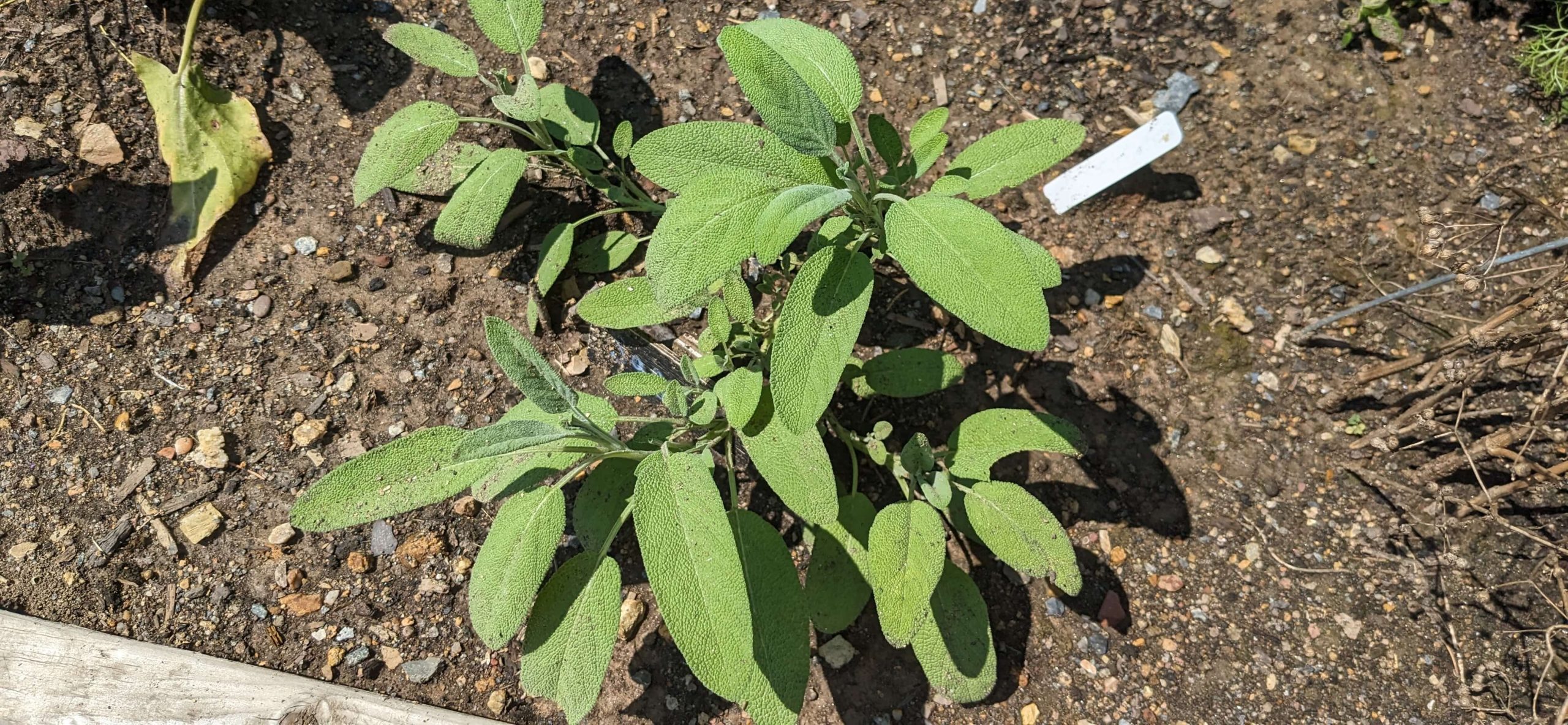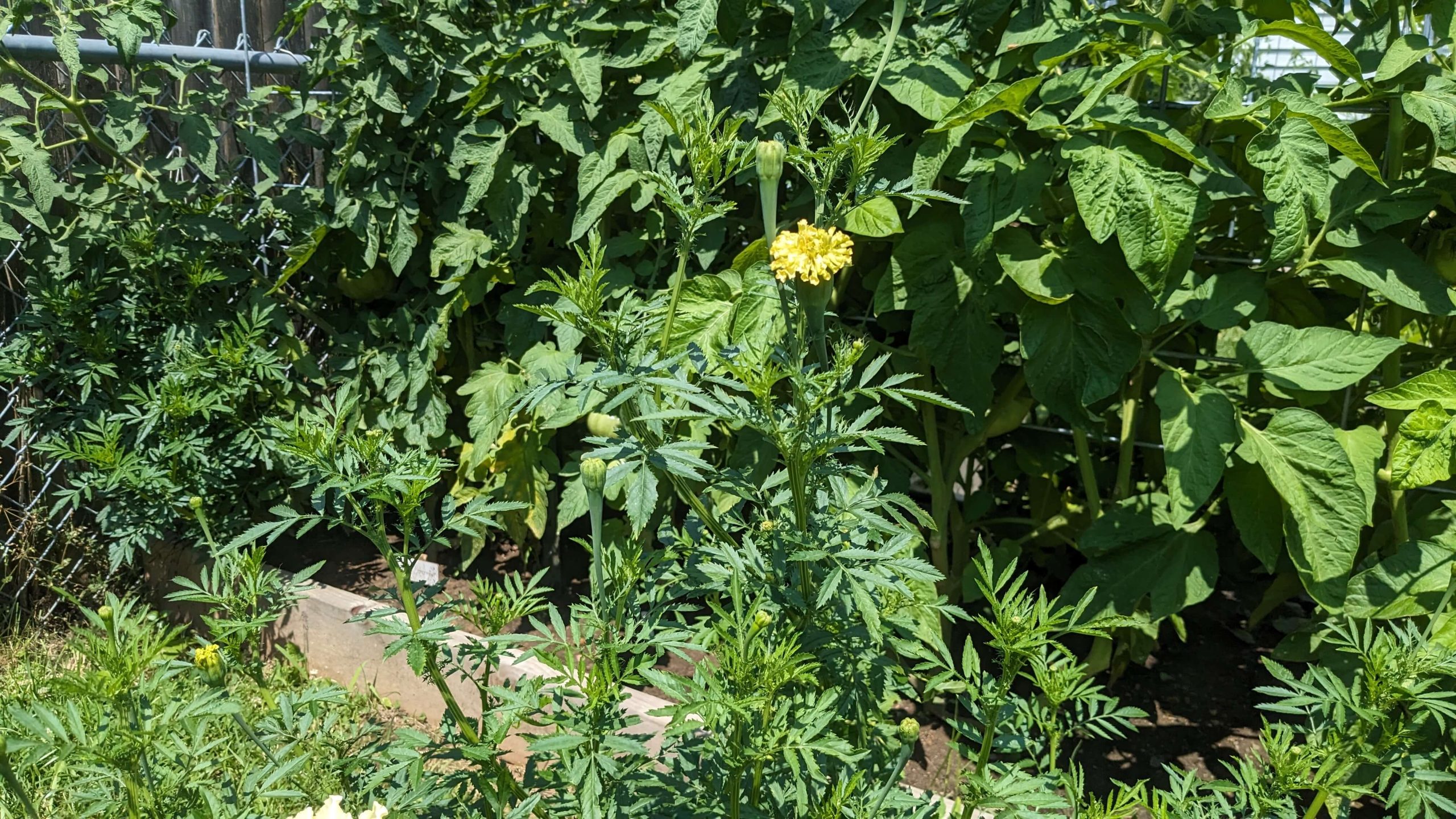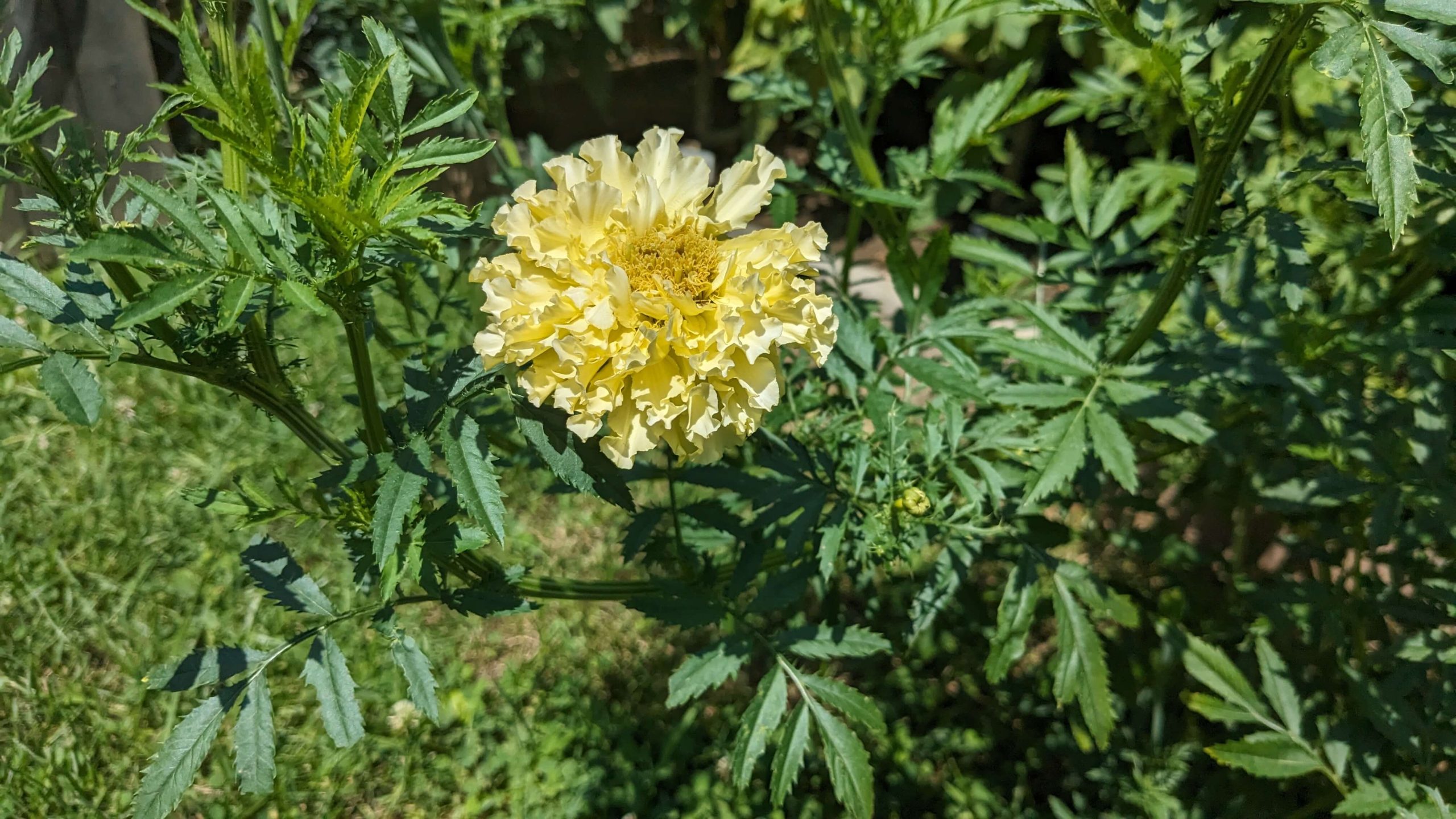Learning what simple herbs to grow in the garden can be intimidating. I’ve heard some people say that growing herbs is easy and others say the opposite, that growing herbs is nearly impossible. What I’m learning from experience is that getting them established in the garden is a little bit harder for me but once they are established, if I am diligent with harvesting, they last all summer.
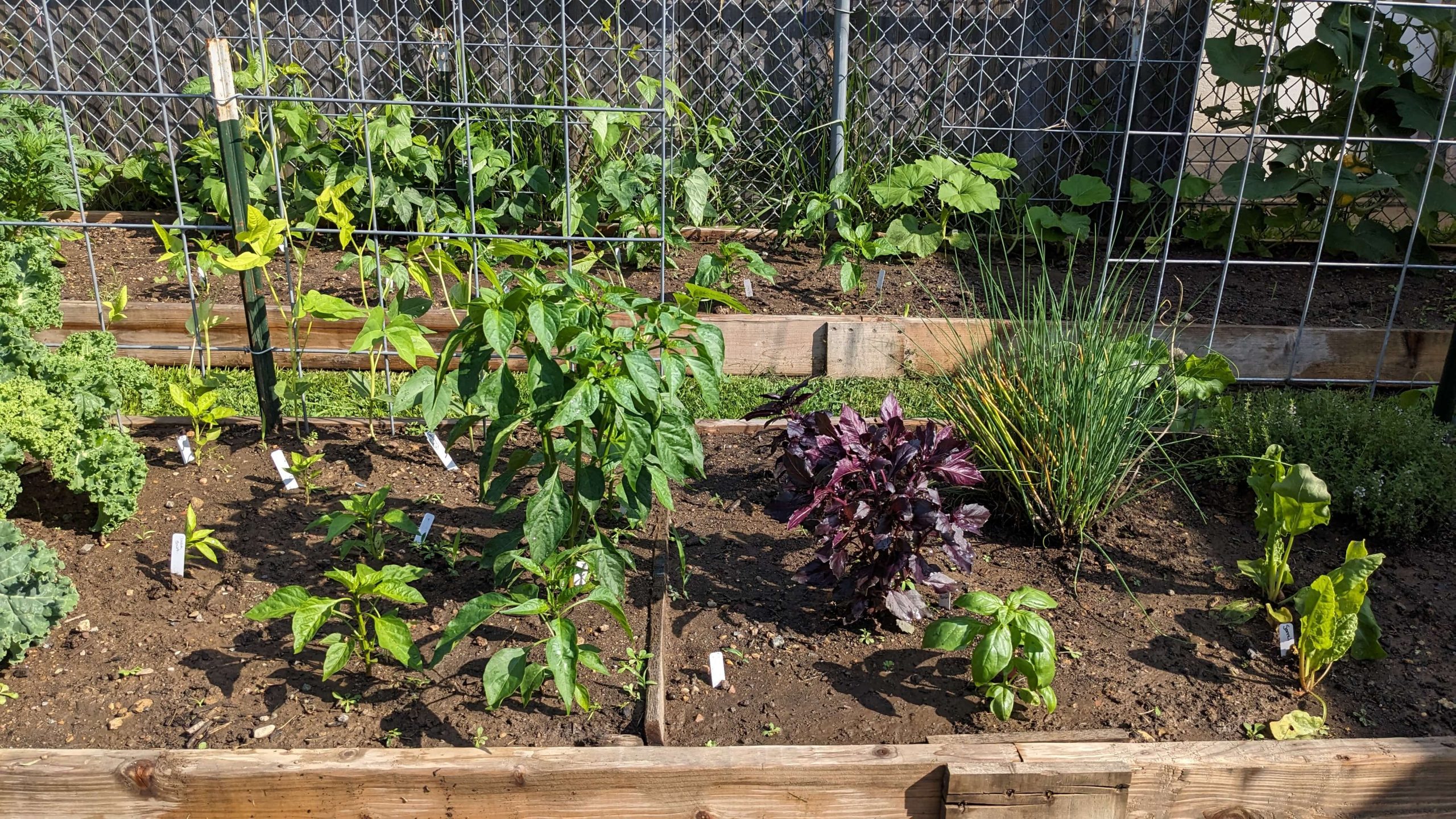
What herbs am I growing?
Fresh herbs are my favorite way to make a dish feel special. I don’t often buy fresh herbs from the store but when I do, it feels like I spend a little and get a lot but waste most of it. Or spend a lot and get a little. Finding simple herbs to grow myself has almost completely eliminated this problem, at least for the summer.
I have had sage, thyme, and oregano in my garden for several years, but I did grow thyme and sage from seed this year. Last year I grew cilantro and it reseeded itself and I have a bunch growing this year and my chamomile too! I did not know that chamomile spreads like crazy, but it does and I am so excited to have it grow for tea this year. Bennett extended our garden so I now have a tea garden where we condensed all the chamomile that came up earlier this spring, and I’m going to add echinacea and lavender. I ended up also growing calendula and yarrow this year but I don’t have notes on it from this growing season. Here’s what those two plants look like.
I transplanted my sage plant that I’ve had for several years though and it sadly did not survive so I’m extra glad that I grew sage from seed. After planting two or three dozen seeds, only four or five grew. I sold all but one and the one I kept is currently thriving. Scroll down to see a picture of the sage plant from seedling to now!
Last year, I grew basil and it is easily my favorite herb to grow in the summer. I love basil and tomatoes together in any meal. Tomato pie, salad, pizza, if it has tomatoes, I am going to try to put basil in it. I also learned about basil tea last year and thoroughly enjoyed that and will be making a lot of it this year because I’m not drinking peppermint tea because of nursing.
I’m growing dill for pickles and to add to homemade tzatziki sauce that I make most of the summer, cilantro for burritos and tacos among other things, and thyme and sage to dry for the winter. I also have used sage in a brown butter glaze for ham steaks that we all enjoyed in my family. I have tried frying sage but we were either not successful or we do not have the taste for it.
Bennett and I decided that this year, one of my goals is going to be to harvest and dry herbs too. I’ve only ever harvested herbs for tea and never for cooking purposes. I’m trying to help our family waste less overall and that extends to all the growing herbs in my garden. So learning how to dry, preserve, and store the herbs I’m growing is something I’m looking into more intentionally.
Anyway, here is a list of the ones I’m growing this year and tips I’ve found about growing herbs.
Sweet Basil:
- Do not plant near bush or pole beans
- A garden friend to asparagus and tomatoes
- Loves heat and is very sensitive to even a light frost
- It matures quickly and transplants well
- A light feeder
- Harvest flower buds before they open and leaves any time
- Pinch or cut the growing tips of the plant to induce a fully bushy plant
Purple Basil:
- Do not plant near bush or pole beans
- A garden friend to asparagus and tomatoes
- Loves heat and is very sensitive to even a light frost
- It matures quickly and transplants well
- A light feeder
- Harvest flower buds before they open and leaves any time
- Pinch or cut the growing tips of the plant to induce a fully bushy plant
- Check out our recipe for simple purple basil iced tea!
Chamomile:
- A garden friend to beans, broccoli, brussel sprouts, cabbage, cucumbers, kale, potatoes, and tomatoes
- Likes a semi-shade and well-drained soil
- Can easily be grown in containers
- Easily reseeds, so harvest often if you don’t want it to spread
- Doesn’t need fertile soil
Cilantro: 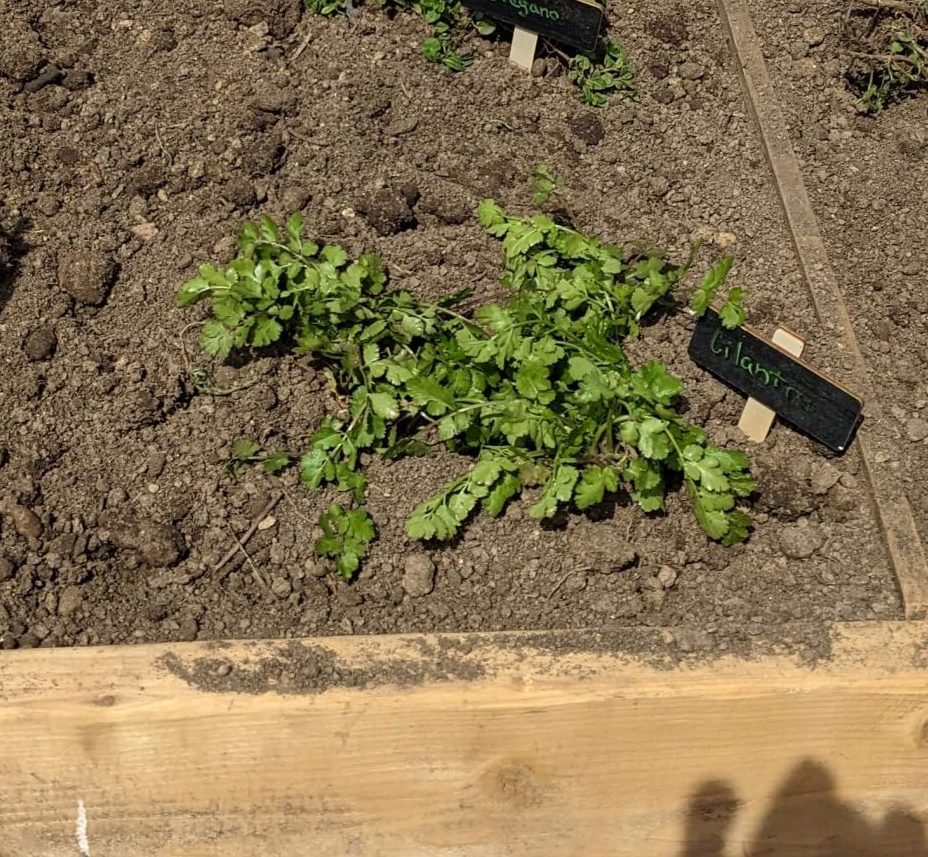
- The leaves of this plant are cilantro but the seeds are coriander
- Not a fussy plant and can be planted almost anywhere
- Best used fresh as it doesn’t store well
My dill did not survive the animals this year. And unfortunately, neither did my lavender or echinacea.
Dill:
- Do not plant near carrots or tomatoes
- A garden friend to broccoli, cabbage, cauliflower, cucumber, and squash
- Not a fussy plant but likes full sun and well-drained soil.
- Does not transplant well but it grows fast
- Dill self-sows
Lavender:
- A garden friend to alliums (like onions and garlic), coneflowers (like echinacea), oregano, rosemary, sage, thyme, yarrow, and zinnia
- Will grow much better once established in its second year
- Drought tolerant
- Full sunshine
Echinacea:
- A garden friend to Lavender
- Will bloom in its second year
- Doesn’t need a lot of water, they are drought-tolerant
Spearmint: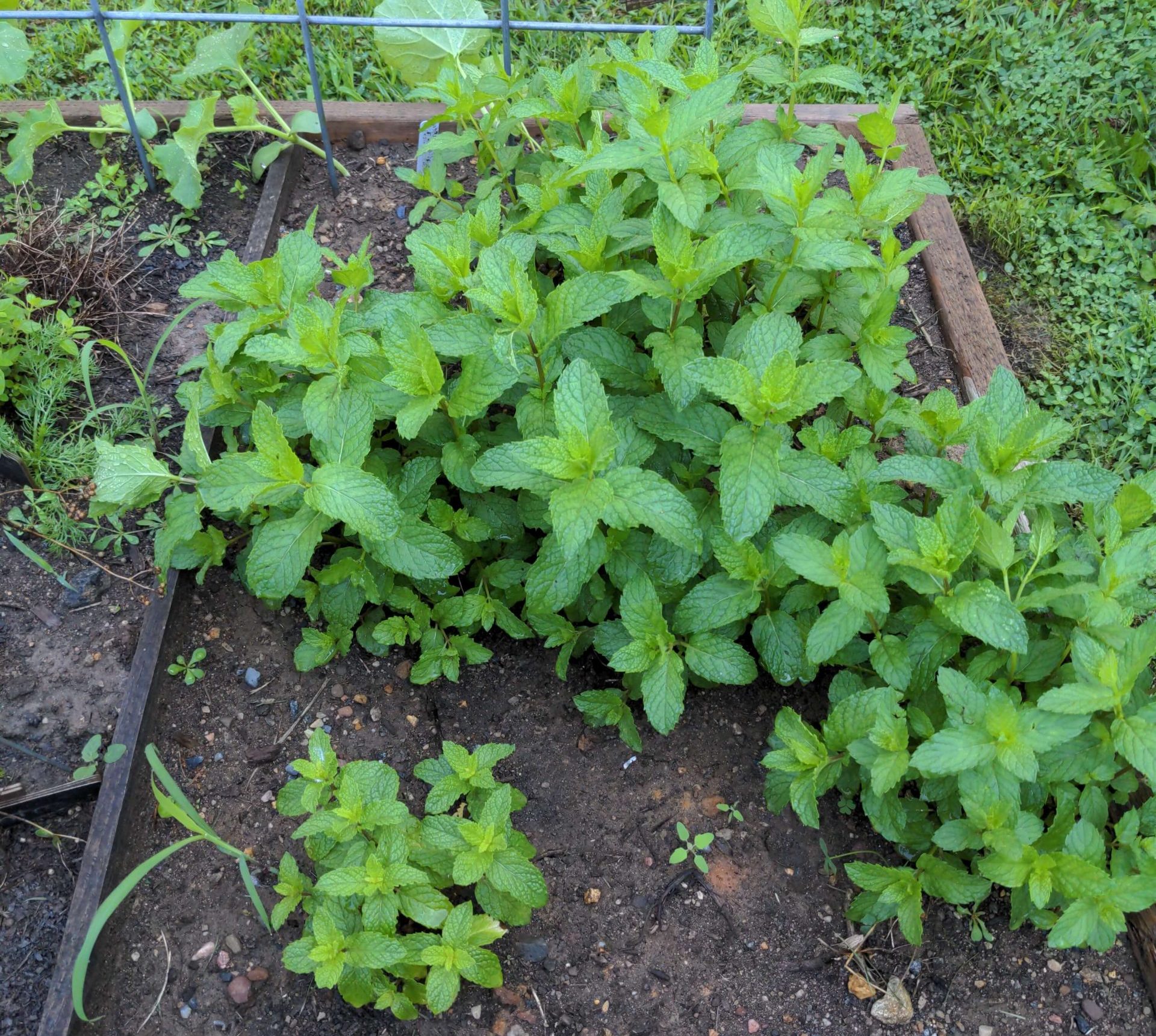
- A friend to broccoli, cabbage, and cauliflower,
- Will invade any space it’s allowed to grow into.
Sorrel: 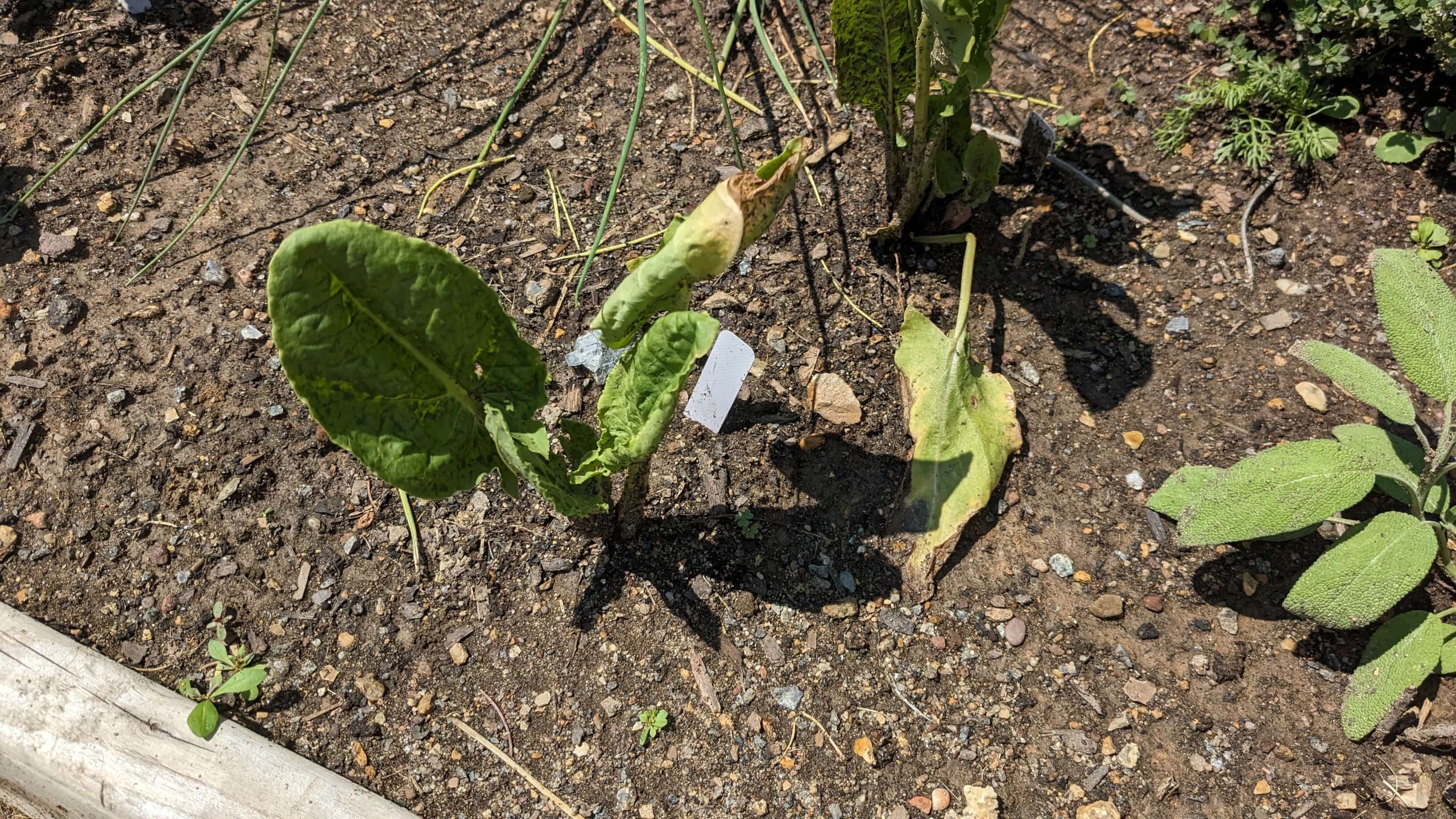
- A spring perennial with lemon-flavored leaves that is good in salad
- Can use it in soups as cooking softens the flavor
- Frequent watering
- In the buckwheat family
Sage:
- Do not plant near cucumber or onion
- A garden friend to broccoli, cabbage, carrots, cauliflower,
Thyme: 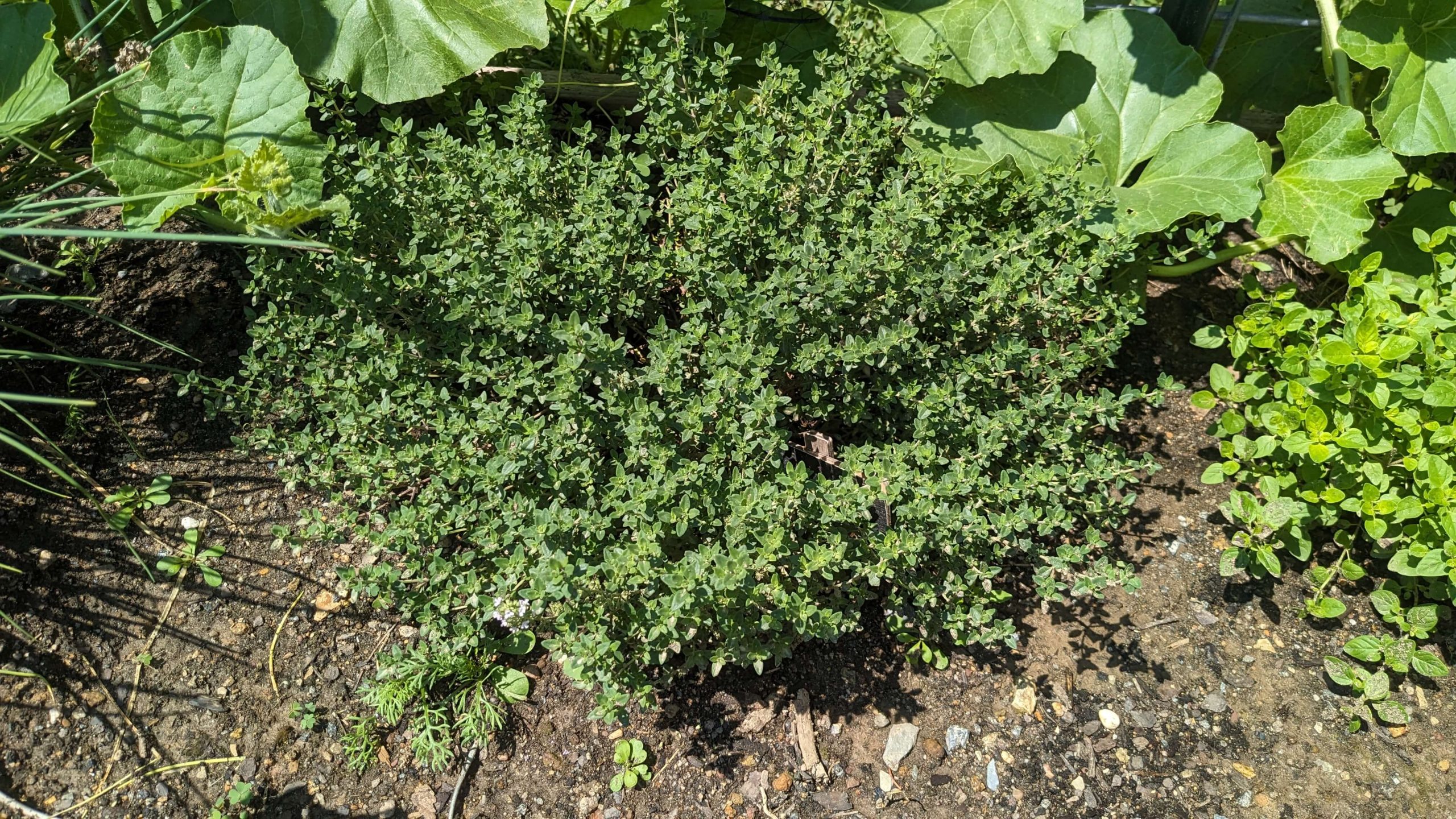
- A garden friend to cabbage
- Does best in full sun, but doesn’t need fertile soil
- Can easily be grown in a container
White Marigolds:
- A garden friend to bush and pole beans, cilantro, dill, rosemary, squash, and tomatoes
- Water regularly
- Do not fertilize during growth
- Need full sun and well-draining soil
- Regular deadheading will increase blooms
- Heat-loving
Even though finding simple herbs to grow can seem intimidating, once you acquire and plant them and they are established, they seem to thrive. I’m currently learning how to harvest them in a way that facilitates new, healthy growth. The enjoyment that we are getting out of growing herbs in our garden and getting to use them regularly is something that we hope to repeat.

What have you learned about growing herbs? Let us know in the comments below!
